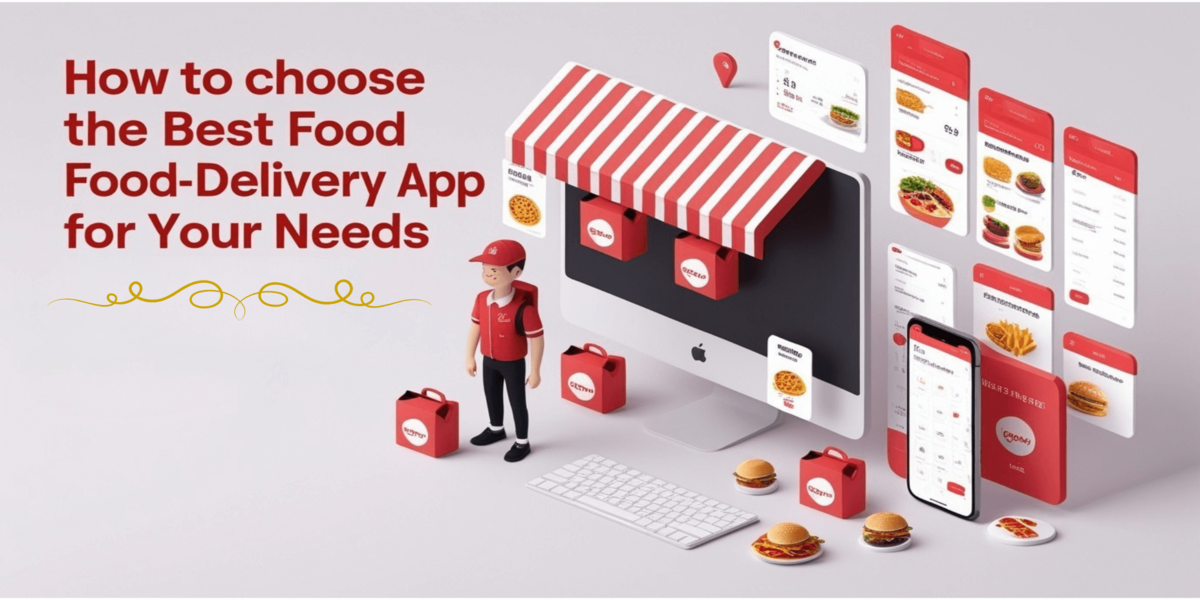All About AI Personalization In Mobile Application
- By Muzammil Rawjani
- 06-10-2025
- Artificial Intelligence
.jpg)
AI personalization uses algorithms that learn from user behavior to customize mobile experiences for each individual user. These systems modify content, features, and recommendations according to user behavior rather than displaying the same interface to all users. The technology observes your interactions and makes the necessary adjustments.
Whereas adaptive apps adjust to the unique preferences and behaviors of each of the users, generic apps handle every user the same way. Because of this change, even within the same program, your app experience will be different from what someone else is having. Although the transformation occurred gradually, it became apparent in the last few years.
Because processing power, data collection techniques, and AI models have advanced to the point of broad usage, 2025 will be a watershed year. Nowadays, customization is a standard feature rather than a premium one, as it is present in the majority of popular apps. Users are expecting apps to "know" them more and more, and companies like Software Orca are setting benchmarks in this domain by engineering mobile applications where personalization is no longer an add-on but the structural core of user experience.
Evolution of Mobile App Personalization
In the early days of personalization, developers manually wrote if-then conditions in rule-based systems. Display Y if a user clicked X. Because of their rigidity, these systems were unable to adjust to unanticipated behavior. They were unable to manage intricate designs and needed frequent manual updates.
1. Data-Driven Breakthroughs
By learning from data without explicit programming, artificial intelligence revolutionized everything. Machine learning algorithms automatically adapt to changes in user behavior by seeing patterns that people would overlook. This method adapts to shifting preferences more quickly and scales better. Over time, the system gets better on its own.
2. Current Market Benchmarks
According to current market standards, apps that use AI-driven personalization receive 20–30% greater engagement rates, and 73% of users anticipate unique experiences. Businesses that invest in these technologies report higher user satisfaction and retention rates. Although the results vary, the numbers speak for themselves.
Core Tech Of AI Personalization
The foundation consists of machine learning algorithms that interpret user data using neural networks and decision trees. These models find trends in past purchases, clicks, swipes, and screen time. They anticipate user desires before users are aware of them. Large datasets are needed for training.
Natural Language Processing:
- Apps can comprehend text and audio input thanks to natural language processing, which powers chatbots and search features that do more than just match keywords.
- Because this technology can understand sentiment and context, conversations feel more natural. Voice assistants appear more intelligent now because of this.
Based on past data, predictive analytics makes predictions about future behavior and recommends likely-to-be-purchased goods or entertaining content. The algorithms make recommendations based on their probability, and with the mobile app development services from Software Orca, these predictive systems are embedded without a hitch into mobile apps for a personalization that feels anticipatory rather than reactive, turning raw probabilities into meaningful, user-specific interactions.
User Data and Context Awareness
Within an application, real-time behavioral tracking tracks each tap, scroll, and pause. Personalization engines instantly use this data to modify what you see in real time. In addition to your historical history, the system reacts to your current session. While this is helpful to some, it is obtrusive to others.
1. Location & Device Signals
Whether you are at home or on the go, using WiFi or cellular, on a phone or tablet, location and device signals give more context. The time of day is also important. Scrolling late at night is not the same as browsing in the morning. These signals help apps make more accurate predictions.
2. Privacy vs. Personalization Balance
It is challenging to strike a balance between privacy concerns and the advantages of personalization. Users are concerned about data collecting but want personalized experiences. Laws such as the CCPA and GDPR aim to preserve privacy while permitting some degree of customization. There is still tension, and businesses handle this with caution.
Personalization in User Experience
Adaptive UI modifies interface components according to your app usage. Unused functions disappear into menus, while often utilized features take center stage. Depending on the selection of users or the time of day, color schemes may change. In fact, the app rearranges itself.
Personalized Recommendations:
- In apps with a lot of material, personalized recommendations increase user engagement. Shopping apps showcase products, news apps give priority to articles, and music services recommend tunes.
- Recommendations are based on an analysis of what you have previously interacted with and what comparable people found enjoyable. Although accuracy varies, it usually gets better with additional data.
With material based on your interests, dynamic notifications deliver communications at the optimal moment for you to reply. You receive targeted prompts regarding topics that are important to you rather than general alerts. Just as important as content is timing. Regardless of tailoring, too many notifications continue to irritate consumers.
Implications In Industries
Based on browsing history and purchase trends, e-commerce customization displays tailored homepages, product recommendations, and targeted discounts. Apps keep track of your price sensitivity, preferred brands, and size. When customers see goods that are relevant to them, conversion rates rise. Some retailers claim that customization has increased sales by 15% to 25%.
1. Health & Fitness Apps
Apps for health and fitness monitor exercise, sleep patterns, and dietary habits. They also modify coaching according to goals and progress. The software turns into a personal trainer that is aware of your motivational trends, schedule, and restrictions. The timing of the reminder changes to coincide with your most likely times for exercise. For some, the strategy works.
2. Finance & Banking Apps
Apps for banking and finance can customize spending alerts, investment recommendations, and budgeting guidance. They become aware of your financial habits and alert you to any odd conduct. Some anticipate cash flow issues before they arise. Although the technology cannot resolve basic financial problems, it does make financial management more accessible.
Integration with Upcoming Tech
Augmented reality and AI combine to provide apps that superimpose customized data on the physical world. Fitness applications show form corrections during workouts, and shopping apps show how furniture looks in your space. Experiences become more engaging and personally relevant as a result. However, the technology still seems experimental.
AI + IoT In Connected Apps:
- IoT and AI link wearables, connected autos, and smart home appliances to mobile apps. Your app is aware of your heart rate, how well you slept, and when you are home.
- Information makes it possible to customize gadgets in more complex ways. As the number of connected devices increases, privacy issues increase.
Slower networks were unable to handle AI in real time, but 5G acceleration makes this possible. Apps process video and sensor data instantaneously, allowing them to manage more complicated customization without lag. For responsive experiences, the speed differential is important, and Software Orca, a mobile app development company in Dallas uses this exact infrastructural leap to build the mobile applications where AI personalization operates at its full capacity, so that the real-time insights translate into fluid journeys.
AI Personalization Challenges
When training data does not accurately reflect all user groups, data bias infiltrates AI models. As a result, some demographics respond well to customization while others do not. Minorities and women frequently obtain recommendations that are less accurate. It takes deliberate work and a variety of datasets to address prejudice.
1. Security & Compliance Issues
Because personalization necessitates the processing and storage of sensitive user data, security and compliance concerns surface. Breaches disclose this information, and rules place rigorous standards on data handling. Businesses who violate the law risk fines and lose the trust of their customers. The legal environment is also constantly evolving.
2. Technical Implementation Hurdles
Developing models that work well at scale, integrating AI systems with current infrastructure, and sustaining performance as user bases increase are some of the technical implementation challenges. Many businesses lack the resources or experience. Although they are helpful, off-the-shelf solutions are not always appropriate. It takes longer than anticipated to develop.
Quick Look On Success Models
Recommendation algorithms power the majority of content discovery on streaming services like Netflix and Spotify, which pioneered AI personalization. Because recommendations align with preferences, users watch and listen for longer periods of time. Although the corporations rarely reveal their particular algorithms, subscriber retention serves as a gauge of performance. It has compelled others to follow.
Travel & Booking Apps:
- Based on search history and booking trends, travel and booking apps tailor price alerts, hotel recommendations, and vacation choices.
- They find out if you want luxury or affordability, mountains or beaches. You will receive flight alerts when the cost of the routes you have looked for drops. Adoption is influenced by convenience.
Apps for education and learning modify the level of difficulty, provide pertinent lessons, and monitor progress of each user. While the software pinpoints their areas of weakness and offers more practice, students go at their own speed. Teachers learn about the demands of each individual student, and with Software Orca’s modern techniques in AI-powered app development, these educational platforms become more than just the basic digital tutors—they turn into flexible systems that refine pathways for every student.
Future Expectations & Conclusion
Beyond suggestions, hyper-personalization will go into fully customized program versions where every user interacts with essentially unique software. Features may arrive or disappear, interfaces may completely change, and even business models may change depending on the individual. Although it sounds thrilling, this calls into doubt fairness and manipulation. Still, we are going there.
1. Role Of On-Device Intelligence
By processing more data locally rather than sending it all to servers, on-device intelligence addresses privacy issues while preserving the advantages of customisation. The on-device machine learning strategy of Apple demonstrates this trend. Data remains with you while processing takes place on your phone. However, there are still limitations in terms of performance and functionality.
2. Closing Reflections
From experimental to anticipated, AI personalization in mobile apps has evolved. Mostly for the better, technology is changing the way we use software on a daily basis. Fairness and privacy issues require ongoing consideration. We might be able to find better balances. Apps will continue to adjust to each user in ever-more-complex ways, and the trend is toward greater personalization rather than less.



.jpg)
.jpg)
